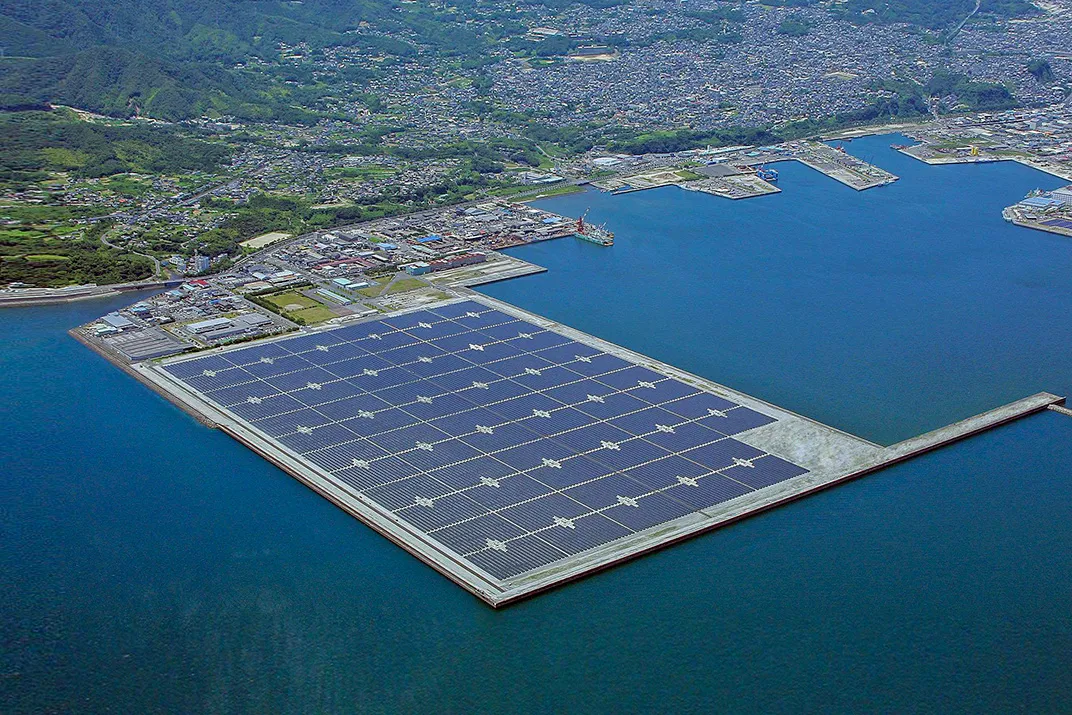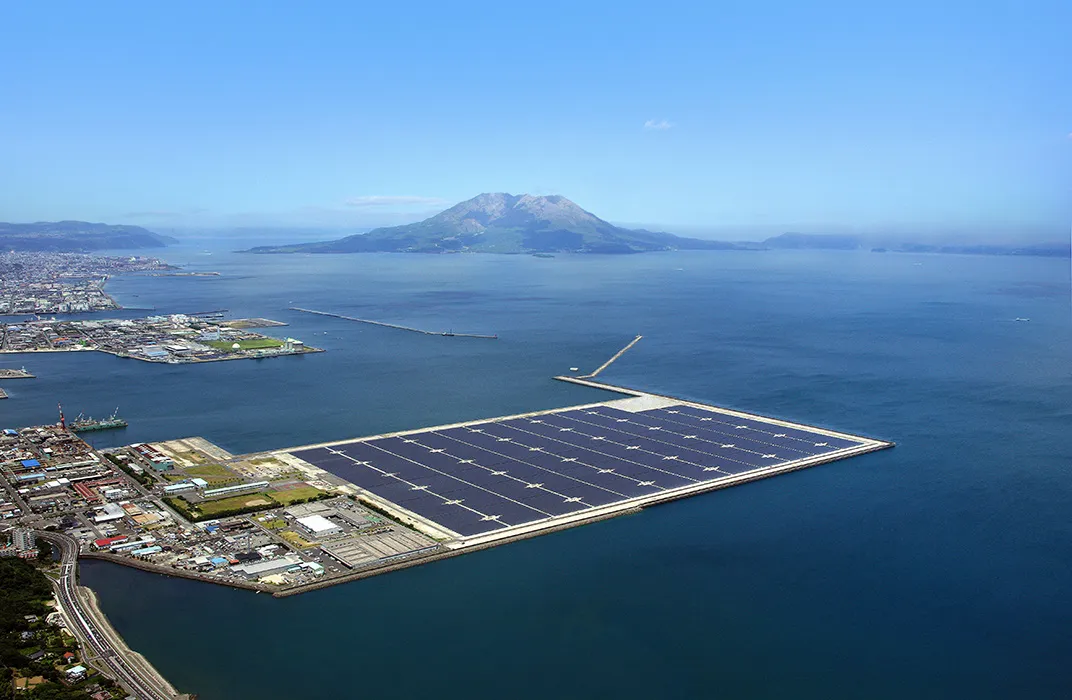Is Japan’s Offshore Solar Power Plant the Future of Renewable Energy?
The densely populated nation has found a new way to harness the power of the sun
Across Japan, 50 nuclear power plants sit idle, shut down in the aftermath of the 2011 Fukushima nuclear disaster. Nobody is certain when government inspectors will certify that the plants are safe enough to be brought back online. Anti-nuclear activists point to this energy crisis as evidence that Japan needs to rely more on renewables. One think tank has calculated that a national solar power initiative could generate electricity equivalent to ten nuclear plants. But skeptics have asked where, in their crowded mountainous country, they could construct all those solar panels.
One solution was unveiled this past November, when Japan flipped the switch on its largest solar power plant to date, built offshore on reclaimed land jutting into the cerulean waters of Kagoshima Bay. The Kyocera Corporation’s Kagoshima Nanatsujima Mega Solar Power Plant is as potent as it is picturesque, generating enough electricity to power roughly 22,000 homes.
Other densely populated countries, notably in Asia, are also beginning to look seaward. In Singapore, the Norwegian energy consultancy firm DNV recently debuted a solar island concept called SUNdy, which links 4,200 solar panels into a stadium-size hexagonal array that floats on the ocean’s surface.
Meanwhile, the Shimizu Corporation has presented plans for the ultimate offshore power plant: solar panels encircling the Moon’s equator that would transmit energy to Earth via microwaves and lasers. The company claims this project could provide up to 13,000 terawatts of electricity per year—more than three times what the U.S. produces. And as an added bonus, nobody would ever have to worry about cloudy days.

